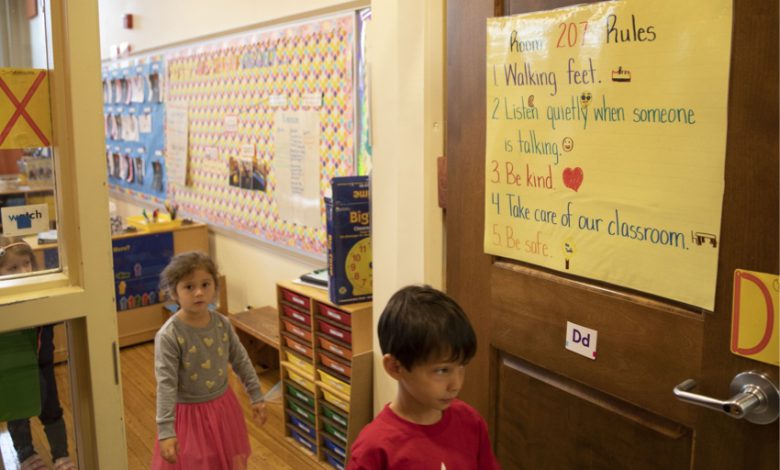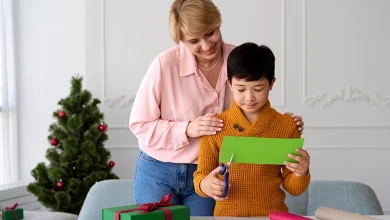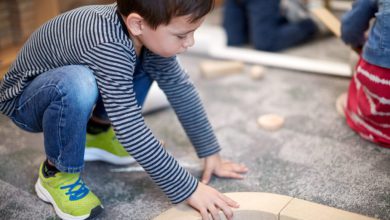The First Six Weeks of School: Creating a Nurturing Classroom Environment

I’ll call her “Annie.” I noticed her the year before, when I knew she would be joining my classroom the next year. She had a permanent scowl and always seemed to be separated from other children “to avoid disruption.” “Prepare yourself,” her teacher warned when she learned “Annie” was transitioning to my room the next year.
The first day of school, several children from her previous class explained that Annie couldn’t sit with certain children, that she was “mean,” and that she needed to be near a teacher at all times to “behave.”
My heart broke. How could this child possibly feel safe and secure in our classroom community if her peers had already decided she was “mean” and unapproachable? I took a deep breath and explained to the group that this was a new year. I didn’t know them; they didn’t know me. Together, we would create a new classroom family. I explained that this was a fresh start and that they could be whoever they wanted to be this year. I wasn’t sure whether the children would understand my words, but I saw Annie’s face soften and her shoulders lower. I hoped that she was relaxing and feeling optimistic about being a part of our classroom community.
Create a safe and nurturing classroom community.
I was determined to create a positive, nurturing classroom community—for every child. When we created our classroom rules together, I made sure to spend a lot of time emphasizing what “be kind” looks like, sounds like, and feels like. I knew we would have to work a lot on compassion, respect, and understanding. Within days, Annie was laughing and playing happily with all the other children. After a few weeks, when we read a story about a little girl who comforts herself with her late grandmother’s blanket, it was Annie who said, “It’s because the blanket feels like her grandmother’s arms around her.” Her comment brought tears to my eyes. Would the Annie that I’d seen last year, who was always yelling and scowling, have been able to share such a tender thought? That’s when I knew she felt safe and secure in the class.
Creating a warm, nurturing, loving, and supportive classroom community is far and away the most important thing we can do for children during the first few weeks of school. Positive relationships are at the heart of everything we do as teachers. The messages we convey to children at the beginning of the year lay the foundation for a successful and meaningful school year, and they also leave a lasting impression that will guide children’s approaches to learning for the rest of their lives.
Teach with love.
How children feel is just as important as how they think and learn. When we teach with love, we teach children to love learning for its own sake. Children will enter your classroom with varying levels of experience with group settings. Some children, like Annie, may have had a difficult experience in the past, but all children will be wondering about what lies ahead: Who do I need to know at school? What if I get sad or scared? What can I do at school? What are the rules? What happens at school?
These questions inspire investigations and “focus questions” for structuring classroom discussions and learning experiences during the first few weeks of school.
- Focus Question 1. What names do we need to know at school?
- Focus Question 2. What should we do if we get sad or scared at school?
- Focus Question 3. What are our rules?
- Focus Question 4. When do things happen at school?
- Focus Question 5. Who works at our school?
- Focus Question 6. How do we make and keep friends? How can we be part of a group?
This Teaching Guide, available for both preschool and kindergarten, empowers teachers to address each question intentionally with children through engaging, developmentally appropriate experiences. Daily plans for each part of the day offer step-by-step support to help them lay the foundation for a positive classroom experience for all children.
Notice, for instance, that children first learn about the other people at school and how to ask for emotional support if they get sad or scared. Devoting two weeks to these questions allows children plenty of time to get accustomed to their new peers, their teachers, the classroom materials, and the schedules and routines. Once they feel more comfortable in their new learning environment, they will be better prepared to work together to create a set of rules, rights, and responsibilities.
Create shared expectations and establish rules.
When that process begins, the Teaching Guide provides embedded support for creating shared classroom expectations with children. For example, the blue text in this call-out box offers strategies for “solving problems and establishing rules as a group” during large-group time.
I used this same strategy to help Annie. Though we had established rules about “being kind,” I noticed that, when children were playing, Annie would watch and then take the materials away from the children who were using them. I suspected she didn’t know how to appropriately join a group. I spoke with her about how to ask for a turn and how to join groups of children in play, but I knew that the whole class would benefit from this type of social problem-solving. During large-group roundup, I asked the class what we could do to make sure everyone got a chance to use the classroom materials during choice time. Annie listened quietly to her classmates’ ideas about sharing and taking turns. Soon, all the children agreed to an “ask and wait” plan. Children demonstrated what it looked like and sounded like to “ask” and then “wait” for a turn.
The next day, we talked about our new “ask and wait” plan and put it into practice during choice time. Though the “wait” part was difficult, they had all agreed to the rule and reminded each other of the expectation. Annie slowly began to try the approach after watching her peers. She wanted to be a part of the group but hadn’t learned how. She just needed clear instructions in these social-emotional skills.
Support the individual AND the group.
The experiences in The First Six Weeks: Building Your Classroom Community Teaching Guide are designed to help individual children like Annie develop the social-emotional skills they need to become part of the classroom community as well as to build a group sense of community.
The Annie who hugged me with tears in her eyes on the last day of school was a very different child than the one I’d met on the first day of school. She laughed and joined others in play. She had friends. She was part of our classroom family.
How are you preparing for the school year?
Keep children like Annie in mind as you prepare for your school year. Your acceptance and guidance might be what they need to blossom! And be sure to let us know how you’re preparing for the first six weeks of school in the comments below.





